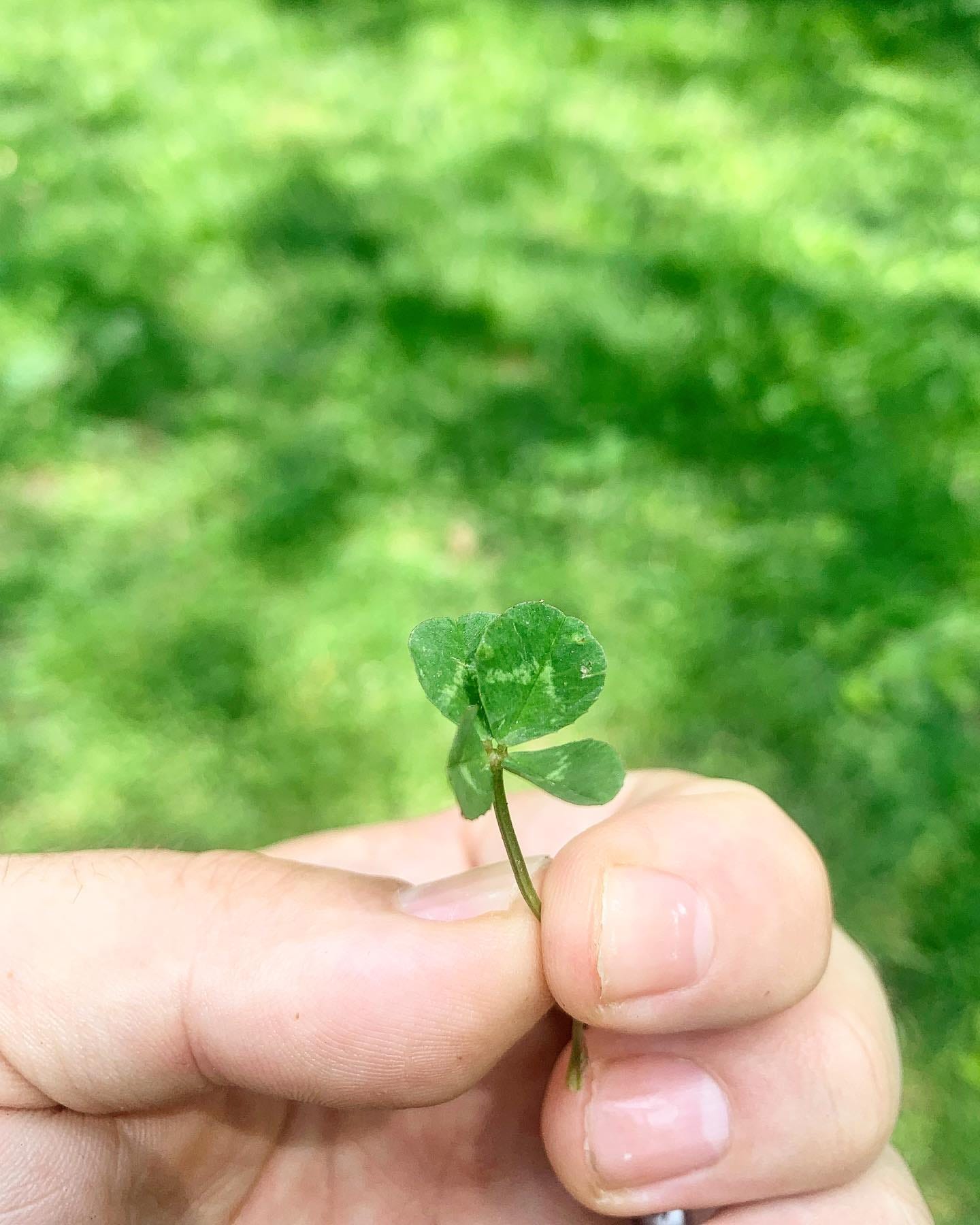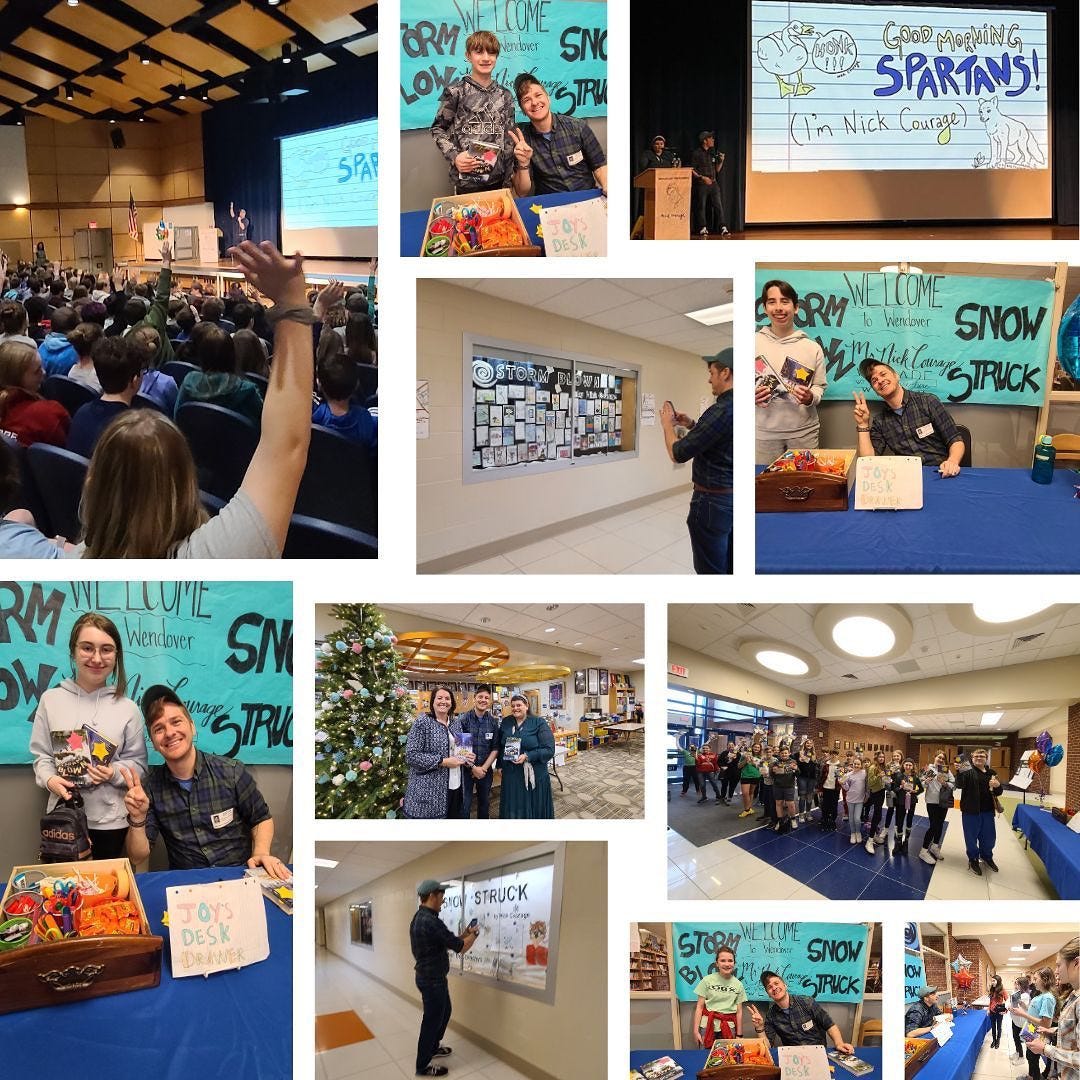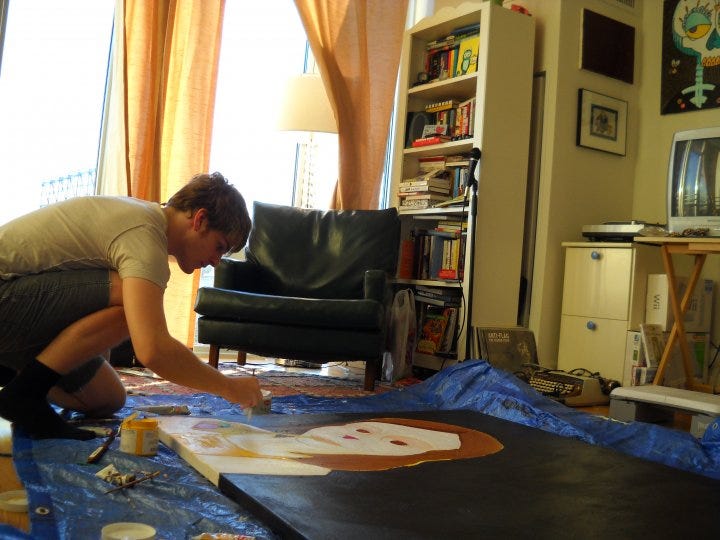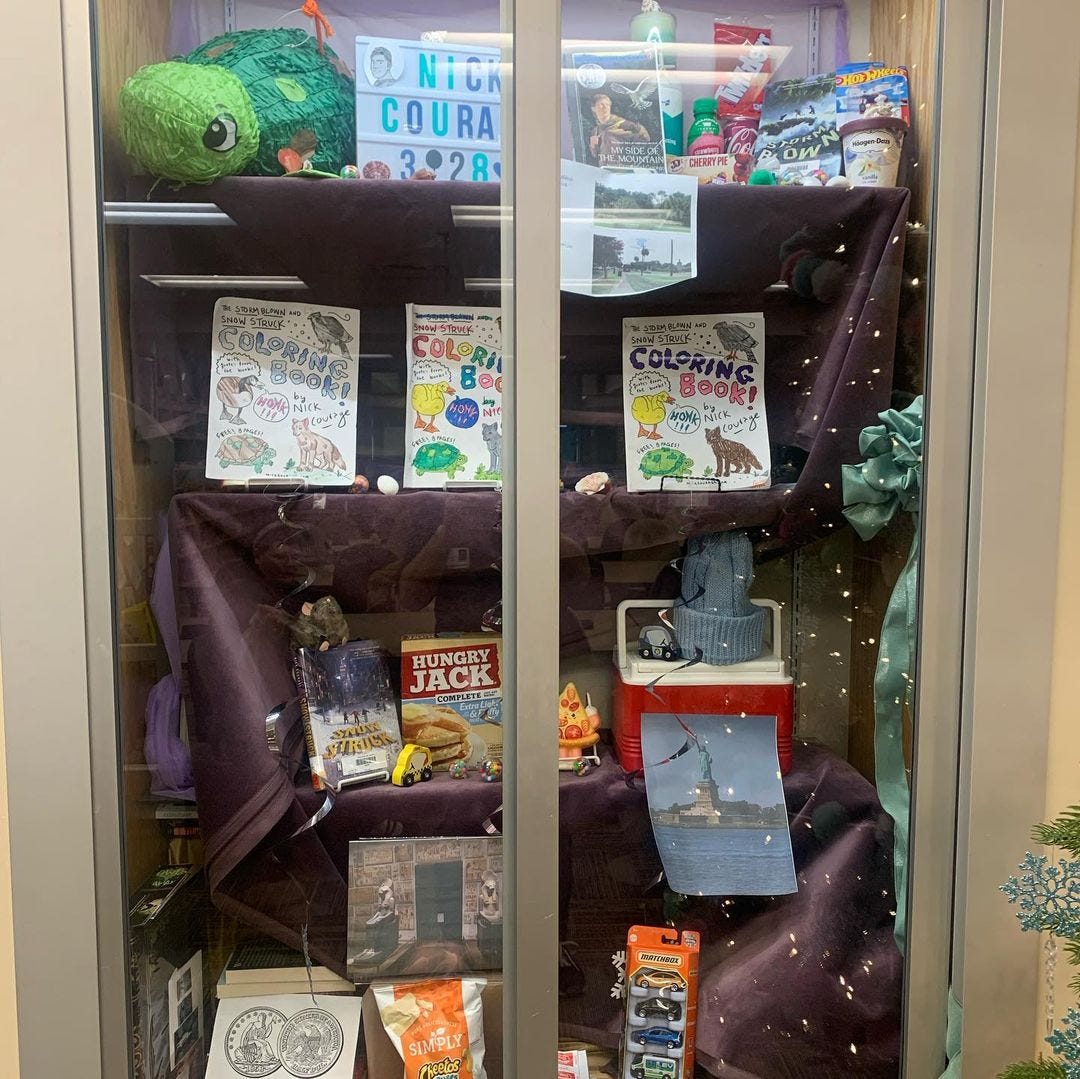My New Book, Celebrity Puppies, Against Perfectionism, Following the Fun, and More!
It’s been a long couple of months since I sent my last email . . . and if our dog Chaely hadn’t made the local news, I wouldn’t know where to start!
“Made the news” is maybe an overstatement.
My wife Rachel—who’s also an author and literary agent!—recently became a recurring guest on our local CBS affiliate, where she talks about books and authors with regional interest (if you’re in Western Pennsylvania: check out Littsburgh, our website about all things literary Pittsburgh) . . .
So this wasn’t actually a segment on The Best Dog in Pittsburgh like I told my mom, but I do feel like I’m bringing a celebrity to the dog park every day!

A little housekeeping before I get to the new stuff: My short story about hiking and summer camp is in the May/June issue of Scholastic’s Storyworks Magazine with an author read-aloud and a writing contest (where you can win a copy of Snow Struck!).
And I finished off the year with a couple of amazing school visits—thank you so much to all of the teachers, librarians, and schools who hosted me in-person this year (after a couple of years of virtual visits).
I’m hoping to do a lot more of these next year and am working on ways to make it a little bit easier to bring me at your schools, so: stay tuned!
I recently got into painting again after my mom and sister recommended I watch Landscape Artist of the Year. If you know me through my writing or if you met me in the past ten years or so, you probably don’t know that I used to paint a lot when I lived in New York. I’d stretch big canvases and use fast-drying acrylics to make bright, color-blocked portraits of cartoon monsters and sharks (and even Rachel).
I sold a couple, gave some away to friends, and even got to be part of a cool group show at the Hotel Chelsea (the infamous literary and musical landmark that most people probably know from the Leonard Cohen song). After that, I kind of called it quits on painting . . . not because I was done with it, but I’d filled up all the wall space in my tiny apartment and didn’t have anywhere else to put my canvases.
That’s around when I started writing The Loudness!*
And I didn’t really think about picking up my brushes again until I heard Tai-Shan Schierenberg talk about abstraction and perfectionism in Landscape Artist of the Year.
This isn’t a video of that, but it’s one of the few YouTube clips of Shierenberg I could find:
There are a lot of different kinds of painters who take part in Landscape Artist of the Year, from photorealistic painters to graphic pop artists to painters whose works are so loosely interpretive that they’re almost unrecognizable.
I’ve been thinking about this a lot, and I’m pretty sure my unconscious bias was to think the more photorealistic painters—or the painters who could really capture the landscape like a camera—were “better” or more skilled at their craft.
Which is funny, because I’m actually pretty clumsy with a paintbrush . . . and if you asked me to pick a favorite painting, I’d probably say “Gaea” by Lee Krasner (I don’t know what it is about this painting; in-person, I could stare at it forever).

I know a lot of creative people who are perfectionists and for better or worse, that’s always been a struggle of mine, too. Not just in writing or painting, but in everything from skateboarding to egg-dying. Even when the final results aren’t perfect—and is anything ever really perfect?—there’s always that self-imposed pressure to do the best I can (within the constraints of my sometimes limited abilities).
I talk a little bit about how perfection is a myth in my school visits.
“Perfect is the enemy of the good!”
But at the same time, I’ve always appreciated perfection as something to strive toward. Of course, nothing is ever perfect. But the attempt to achieve an impossible ideal feels like it’s been basically hardwired into the creative urge from the beginning of time and I can’t help telling myself that if I work really hard, I make whatever I’m working on as close to perfect as it can get.
So it kind of blew my mind that the judges on Landscape Artist of the Year—and especially Tai-Shan Schierenberg—are pretty much completely disinterested in that kind of perfectionism.
There’s an appreciation for an artist’s skill and for their vision (regardless of their style), but paintings that look like photographs are “a little boring” and landscapes that look fully finished with lots of fine details are “overworked” or “closed off to the viewer.” Whenever the judges are struggling to find something nice to say about a painting, they’ll reach for “technically proficient.”
Because craft is important, but execution isn’t everything: you don’t have to be a good painter to make a great painting. What’s the point—one of the judges genuinely wonders—of a painting that’s just mirroring a world where cameras exist?
Which isn’t to say that abstract artists can’t be perfectionists!
But more positively received paintings are looser and more expressive in their brushstrokes. They’re communicating a feeling or emotion, filtered through oils and acrylics. More successful artists on the show know when to stop painting—and most of them have tricks to keep their paintings from looking too perfect. Like holding their brushes at the very end of their handles, where the eraser would be on a pencil, so they have as little control over their strokes as possible.
Not everything is fine art—tragically?—but there’s something so freeing about the idea of putting perfectionism in the “cons” column instead of striving for it.
I talk to so many kids and adults who don’t like to write because they don’t think they’re good enough. When I visit schools, I usually talk about how I didn’t start writing novels until I was in my thirties because I’d been discouraged in a creative writing class. My next door neighbor plays guitar so well that I thought he was blasting classic rock radio, but he doesn’t think he’s good enough to start a band.
That idea of exceptionalism—that you have to be the very best at something if you’re going to spend time doing it—keeps so many people from trying new things. Nobody wants to be an amateur (or to be perceived as amateurish).
But the word “amateur” is rooted in the Latin word for love, amatorem.
In Italian, amatore. In French, amateur (“one who loves, lover").
The original meaning was someone who does something for love instead of money—but as early as the 18th century, there’s been that kind of snide secondary implication that someone’s an amateur because they’re less competent at their craft . . . as if the true value of any creative practice is in the price tag you can put on it.
Somewhere along the way, the lines got blurred between non-professional (which is a fine thing to be, not everyone wants to monetize their passions) and unprofessional or dilettantish (which has more negative connotations).
That blurring is probably why I’ve always been motivated by perfectionism, even when I buck against it—or when it’s held me back from trying new things—and I don’t think I’m alone in that.
I promise this isn’t a paid sponsorship for Landscape Artist of the Year (now streaming on Tubi!) but what makes that show so refreshing is that there’s not a lot of distinction between non-professionals and professionals. Fifty amateur and professional artists are invited to paint landscapes alongside the eight artists who’ve been selected to compete by the judges (also comprised of amateurs and professionals) . . . and nobody really seems to care who’s who.
In the world of the show, everyone’s just painting for the love of it.
And even if a painter was able to perfectly render the Platonic ideal of a landscape, I can almost hear Tai-Shan Schierenberg being too polite to say: “how boring is that?”

The reason I’ve been thinking so much about perfectionism and creation—and the reason I haven’t sent a newsletter these past couple of months—is that I’ve been on deadline for my next book, which is the first book in a fantasy series!
I can’t really talk too much about it yet because it hasn’t been officially announced . . .
But my books are usually really heavily researched and plotted—and I had so much fun letting go of my perfectionist impulses and just “following the fun” wherever it took me. I just finished the first book in the series this week (the same day I found my first-ever four-leaf clover) and I ended up really surprising myself with this one.
Truly: I cannot wait to share this book and series with you.
Hoping you’re all outside and painting in the sunshine :)
Your friend,
* If you’ve read The Loudness, you might remember that one of the supporting characters is a portrait painter who lives on the Other Side!
For new subscribers: I haven’t linked to my free teacher resources in a while. You can download these on TPT or find more information on my website (here’s the page for Storm Blown and here’s the page for Snow Struck)!









